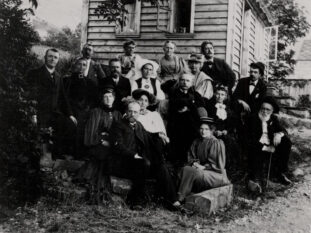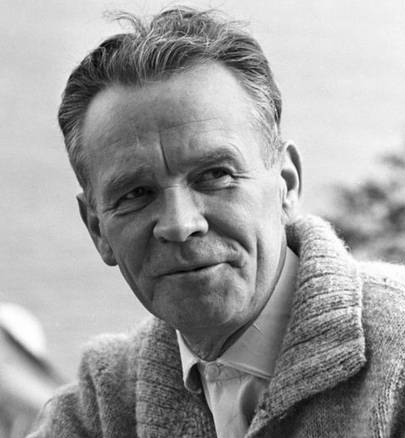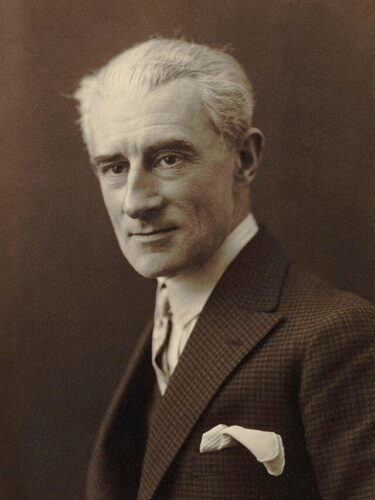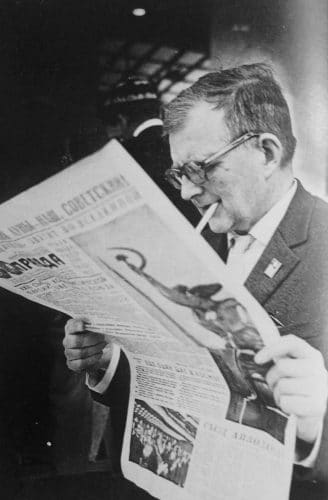The Manor House from 1665 between fjord, glacier, mountains and waterfalls
Home
“Grieg in Hardanger” – Interview with Leif Ove Andsnes
“Grieg in Hardanger” – Interview with Leif Ove Andsnes
This year’s program simply focuses on Hardanger?
The title of the theme, “Grieg in Hardanger,” might sound like a tourist trap. But I think it’s meaningful that in this final festival, we highlight the music from Rosendal’s own region. Hardanger has a very rich folk music tradition, though that’s not what we’re focusing on here—although the folk music clearly shines through in the works of Edvard Grieg and Geirr Tveitt.
Grieg’s connection to Lofthus and Hardanger was strong. I was inspired by a booklet Reidar Storaas wrote for the Grieg anniversary in 1993, also titled “Grieg in Hardanger.” That’s when I realised how much Grieg actually composed while in Hardanger—major works like the Holberg Suite, the String Quartet, and so on. Important pieces.
Tveitt is perhaps the quintessential Hardanger composer, having lived in Norheimsund for much of his life. During the war, he collected folk tunes from across Hardanger and composed versions of the Folktunes from Hardanger for solo piano and for symphony orchestra.
I’ve known Knut Vaage since we studied around the same time at the Bergen Music Conservatory in the late ’80s—both of us as pianists. It’s been wonderful to see how Knut gradually found his path as a composer. Today he is one of our most versatile Norwegian composers, with a large output in a wide range of genres—from opera to solo works—and using improvisation, electronics and video, always in close dialogue with performers.
Like me, he has lived in Bergen for many years, but he grew up in Sunde—not far from Rosendal.
We’re performing six of Knut’s works at the festival, including no fewer than three world premieres.

Edvard Grieg celebrating his birthday in Lofthus 15. June 1896 with: 1. row (from left): Chr Smitt, Tonny Hagerup, Marie Grieg, Johan Halvorsen. 2. row: Frants Beyer, mrs Beyer, John Grieg, Brita Utne, Nina Grieg, Ludwig Müller. 3. row; mrs Halvorsen, mrs Giertsen, Edvard Grieg, Adelina Hagerup, Herman Hagerup. 4. row; Børre Giertsen, mrs Aleksander Bjerke.
Tell us about the works being premiered
Knut Vaage has written the new pieces for countertenor Daniel Sæther and the early music ensemble C4. They make up three of the four parts in the cycle “Tilstander”, which Knut began with “Vintersong” in 2017. The cycle reflects an open approach to the relationship between human beings and nature. The changing seasons form the framework of the large cycle in nature, and the three pieces being premiered at the festival are inspired by spring, summer and autumn.
Knut has written a beautiful text about these and the other works of his that are being performed at the festival—it’s available on the festival’s website. Highly recommended!
By the way, C4 is an ensemble that primarily performs on period instruments. This has also allowed the program to include a fair amount of Baroque music, performed by wonderful musicians who have this style in their blood.

Regarding Grieg—are you only highlighting his connection to Hardanger?
No, we’re also playing music not composed in Hardanger. I’m focusing on two additional aspects: his studies in Leipzig, and his songs.
Grieg studied in Leipzig from the age of 15 to 19. In his early works, it’s clear how much he was influenced by Leipzig—the music and the German tradition. We’ll be performing music by Felix Mendelssohn and Robert Schumann during the festival, and Thursday morning’s concert is titled “Leipzig”—a program where we’ll hear Grieg’s early Op. 4 songs alongside works by these German composers.
Today, Grieg is internationally known, and works like the Piano Concerto and Peer Gynt music are global hits. But it’s interesting to note how often international audiences are unfamiliar with Grieg’s songs. The reason is, of course, that most of them are set to Norwegian poetry—and few singers outside Scandinavia dare take on Norwegian texts. His Op. 48 songs in German are more commonly performed abroad. They’re wonderful, but many outside Norway don’t know the Vinje songs (op.33) or Haugtussa.
For me, it is often in his songs that Grieg reaches his deepest emotional depths. His finest songs have a signature just as strong as Schubert’s and Schumann’s most famous lieder.
We’re performing many of Grieg’s songs at this festival—both well-known and lesser-known ones—with two excellent singers: Mari Eriksmoen and Eirik Grøtvedt.
You’re also performing a major piano sonata by Geirr Tveitt—his Sonata No. 29?
Yes, and imagine—Tveitt composed 30–40 piano sonatas, and this is the only one that survives today, after the fire at the Tveit family farm in 1970, where 70–80% of all his works were lost in the flames. Fortunately, this large sonata was saved. It was Tveitt’s favourite, and Norsk Musikforlag had already published it in print.
The sonata is unique in Norwegian musical life. I don’t know of any other Norwegian piano work that is more epic in its form and ambition. Grieg’s Ballade is a journey—but Tveitt’s sonata is on a larger scale. I’ve played it a lot over the past two years, including abroad, and audiences are clearly moved and fascinated by this distinctive music—whether I’m performing it in Barcelona or Baltimore.
 Geirr Tveitt (1908-1981)
Geirr Tveitt (1908-1981) The program doesn’t only revolve around Hardanger. Ravel has an anniversary?
Yes—he turns 150 this year, and we’re devoting an entire concert on Friday evening to his music. I haven’t played much Ravel myself, but his music has grown in me, and today I’m deeply touched by it. The colours and sensuality of his music are extraordinary. I can go for days thinking about—or hearing in my mind—certain chords and harmonies. It’s like when your mouth remembers the very best flavours from a memorable meal. But Ravel’s music is also deeply emotional. It gets under your skin and often carries a veil of melancholy and depth.
This program also features Rebecca Clarke’s Viola Sonata. She was a British composer and also a well-known violist. She played in the orchestra when Ravel conducted in London in 1928. The Viola Sonata is her most famous work. When she won the Eleanor Coolidge Composition Competition with it in 1919, the jury initially didn’t believe she had written it. Several people thought a woman couldn’t have composed such a powerful piece, and suspected that a man—perhaps Ernest Bloch or even Ravel—had used a female pseudonym.

Maurice Ravel (1875-1937)
And another viola sonata marks the 50th anniversary of Dmitri Shostakovich’s death?
Yes, we’re performing his final work—the Viola Sonata—on Saturday evening. It’s a piece that opens vast spaces—emotionally and philosophically. I hope this program can also open up spaces for reflection and empathy in a world marked by conflict and tragedy.
The concert begins with a short piano piece by Ukrainian composer Valentin Silvestrov, who had to flee Kyiv as an elderly man shortly after the Russian invasion in 2022. Then we’ll hear some beautiful, at times melancholic, Baroque music; the premiere of Knut Vaage’s “Haust” (Autumn); and finally, Shostakovich.
When I scheduled the Viola Sonata for the Saturday evening concert—on August 9—I had no idea that this is actually the exact date of Shostakovich’s death in Moscow, 50 years ago.

Dmitrij Sjostakovitsj DSCH (1906-1975)
Grande finale on Sunday—it looks like it’ll be a long and rich concert?
This is the final Rosendal Chamber Music Festival, and we need to mark it with a proper farewell. Only one concert on Sunday, but it’s a long one—with two intermissions and a highly varied program.
We’ll revisit composers who have shaped this year’s festival—among them Mendelssohn, with his incredible String Octet—a classic of chamber music festivals, but one we haven’t performed before in Rosendal. It’s mind-boggling that he wrote it at age 16. Perhaps he is music history’s greatest wunderkind.
And we’ll close the festival with an unusual piece: Louis Andriessen’s Workers Union. A piece for open instrumentation, without fixed pitches, but with a strict rhythmic structure. It will be led by five percussionists, and more festival musicians will join in. The work’s title reflects a desire for solidarity and collective action.
That sense of community is always strong during these festival days—between everyone working for the festival, the musicians, and the audience. The effort and collaboration involved are deeply moving. I hope the festival’s conclusion will feel like a triumph of togetherness.
Finally: the audience is offered a music experience using virtual reality?
Yes, this is a small bonus for our audience—a free 15-minute experience that I hope many will take advantage of. My friends in the Mahler Chamber Orchestra have developed a VR project that can be experienced between Thursday and Saturday during the festival. I got to try this a couple of years ago when the project was brand new, and I found it overwhelming. You put on VR goggles and headphones and can move freely in the “room” with the musicians. It’s a string quintet performing the first movement of Mozart’s incredible G minor String Quintet. The sound quality in the headphones is phenomenal, and the experience is spatial—when you move closer to one musician, you hear that person more clearly than the others, just as you would if you were in the room with them.
You need to register and choose a time slot on the festival’s website. Only two people can be in the VR space at once, so it’s first come, first served.
I was very moved by the experience and highly recommend it to anyone who wants to discover a new way of experiencing great music.